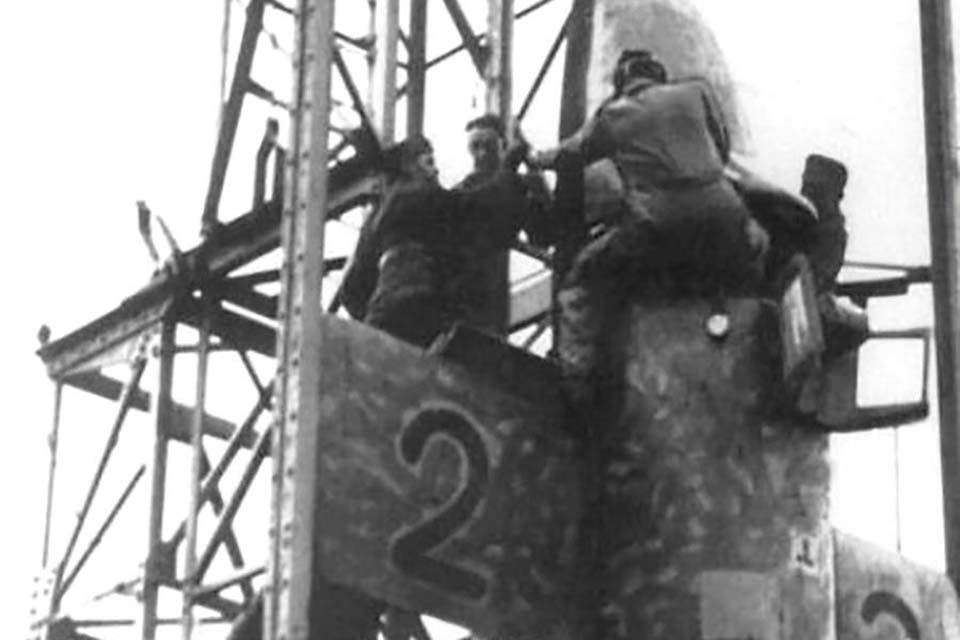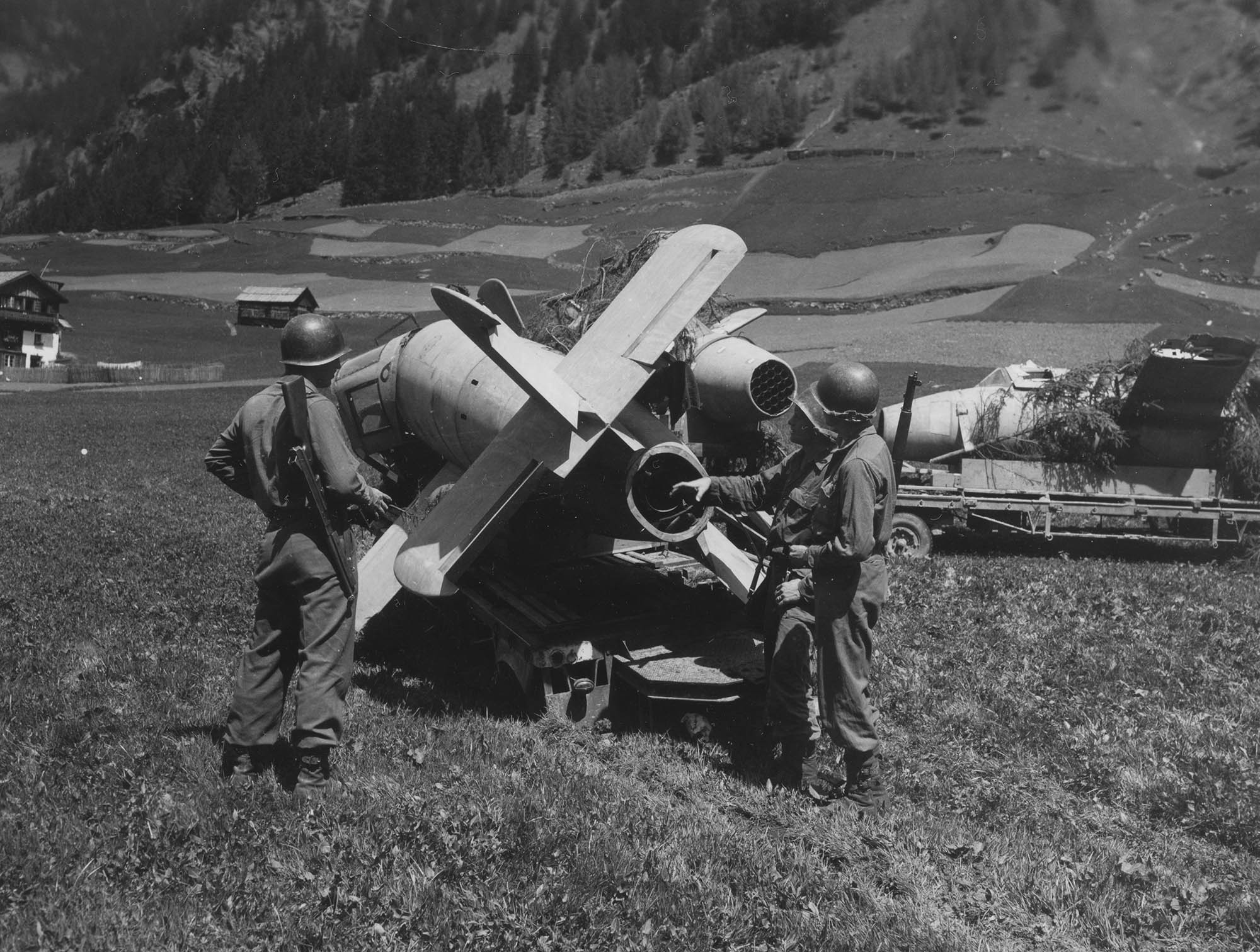Facing a critical shortage of C-Stoff fuel for JG.400, Colonel Wolfgang Späte was informed by General of Fighters Adolf Galland that “because of a special SS initiative, a defensive surface-to-air rocket aircraft is supposed to be forced into production. And they will be propelled by C-Agent as well. That is the height of stupidity, but it’s also fact.”
With the Me-163 in perpetual development, in July 1944 the Luftwaffe established an emergency program to come up with a quick and dirty solution to the Allied bombers pummeling Germany. Engineer Erich Bachem’s Ba-349 Natter (Adder) would operate more like a guided missile: a vertical-takeoff, semi-disposable manned rocket. The Luftwaffe rejected the concept, so Bachem put it in front of Heinrich Himmler. The Reichsführer-SS, desiring to give his personal army some air power, approved the idea.
The Natter was to be built by unskilled laborers using wood, glue and nails. The wings were simple wooden blades, with all control surfaces on the cruciform tail. Because the Walter rocket motor wasn’t powerful enough to launch a fully loaded Natter straight up, four solid-fuel boosters would provide 10,500 extra pounds of thrust for 10 seconds, until the main engine built up enough thrust to climb at 37,000 feet per minute. At first the idea was to ram enemy bombers with a concrete nosecone, but eventually that became a Perspex cap over as many as two-dozen R4M rockets. After firing them, the pilot would release the disposable nose section and a brake parachute. The sudden deceleration would separate the cockpit from the rocket, and they would descend under separate parachutes.

The Natter required no landing gear, no runways, no huge manufacturing commitment and hardly any development time. The first prototype was ready in October 1944, towed glide tests were flown in November and an unmanned test launched three days before Christmas. A second test in January 1945 with a dummy pilot was also successful, though the rocket’s leftover T-Stoff and C-Stoff exploded on touchdown. As the pilot would have landed safely clear of the blast, plans went ahead for a manned test.
Experienced Arado Ar-232 pilot Lothar Sieber signed on for the first vertical-takeoff manned rocket flight. On March 1, the Natter rose from its launch tower on a pillar of smoke and steam, but before it passed 500 feet something went wrong. It pitched over backward and its canopy flew off. Climbing inverted, it disappeared into the clouds. Less than a minute later it came hurtling back down, still under full power, to hit the ground about five miles away with Sieber still inside. He may have been pinned in the cockpit by G forces, knocked unconscious or killed when the canopy flew back.
The SS figured that if a veteran test pilot couldn’t control the Natter, no inexperienced pilot could, so it cancelled the project. But like the Komet, the Natter broke new ground, if at a high cost.
Ready to build your own Bachem Ba-349 Natter?





